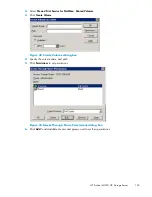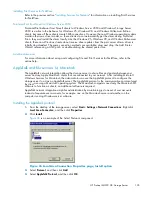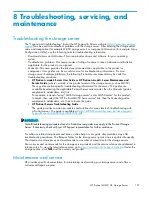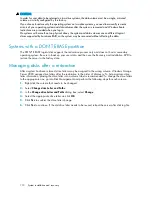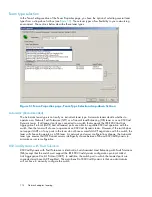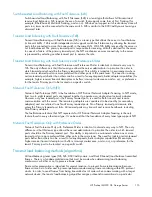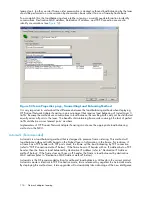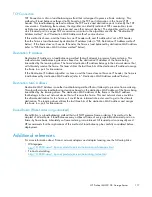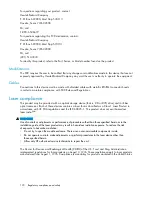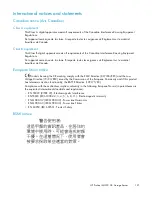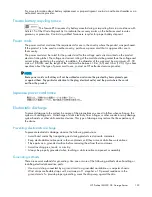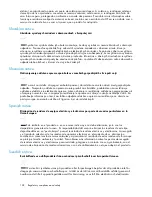
TCP Connection
TCP Connection is also a load-balancing method that is designed to preserve frame ordering. This
method will load balance outbound traf
fi
c based on the TCP port information in the frame’s TCP
header. This load-balancing method combines the TCP source and destination ports to identify the TCP
conversation. Combining these values, the algorithm can identify individual TCP conversations (even
multiple conversations between the team and one other network device). The algorithm used to choose
which teamed port to use per TCP conversation is similar to the algorithms used in the “Destination IP
Address method” and “Destination MAC Address method” sections below.
If this method is chosen, and the frame has an IP header with and IP address but not a TCP header,
then the frame is load balanced by destination IP address (refer to “TLB Destination IP Address method”
below). If the frame does not have an IP header, the frame is load balanced by destination MAC address
(refer to “TLB Destination MAC Address method” below).
Destination IP Address
Destination IP Address is a load-balancing method that will attempt to preserve frame ordering. This
method makes load-balancing decisions based on the destination IP address of the frame being
transmitted by the teaming driver. The frame’s destination IP address belongs to the network device that
will ultimately receive the frame. The team utilizes the last three bits of the destination IP address to assign
the frame to a port for transmission.
If the Destination IP Address algorithm is chosen, and the frame does not have an IP header, the frame is
load balanced by destination MAC address (refer to “ Destination MAC Address method” below).
Destination MAC Address
Destination MAC Address is another load-balancing method that will attempt to preserve frame ordering.
This algorithm makes load-balancing decisions based on the destination MAC address of the frame being
transmitted by the teaming driver. The destination MAC address of the frame is the MAC address
that belongs to the next network device that will receive the frame. This next network device could be
the ultimate destination for the frame or it could be an intermediate router used to get to the ultimate
destination. The teaming driver utilizes the last three bits of the destination MAC address and assigns
the frame to a port for transmission.
Round Robin (Packet order not guaranteed)
Round Robin is a load-balancing method that will NOT preserve frame ordering. This method is the
simplest of all methods. It load balances every outbound frame of every operational teamed port on a
frame–by-frame basis. Absolutely no frame ordering is maintained. All teamed ports are equally used.
HP recommends that the implications of this method of load balancing be carefully considered before
deployment.
Additional references
For more information about ProLiant network adapters and adapter teaming, see the following links:
•
Whitepapers
http://h18004.www1.hp.com/products/servers/networking/whitepapers.html
•
ProLiant networking
http://h18004.www1.hp.com/products/servers/networking/index.html
HP ProLiant ML350 G5 Storage Server
117
Summary of Contents for ProLiant ML350 G5
Page 10: ...10 ...
Page 22: ...22 The HP storage server solution ...
Page 86: ...86 Print services ...
Page 118: ...118 Network adapter teaming ...

